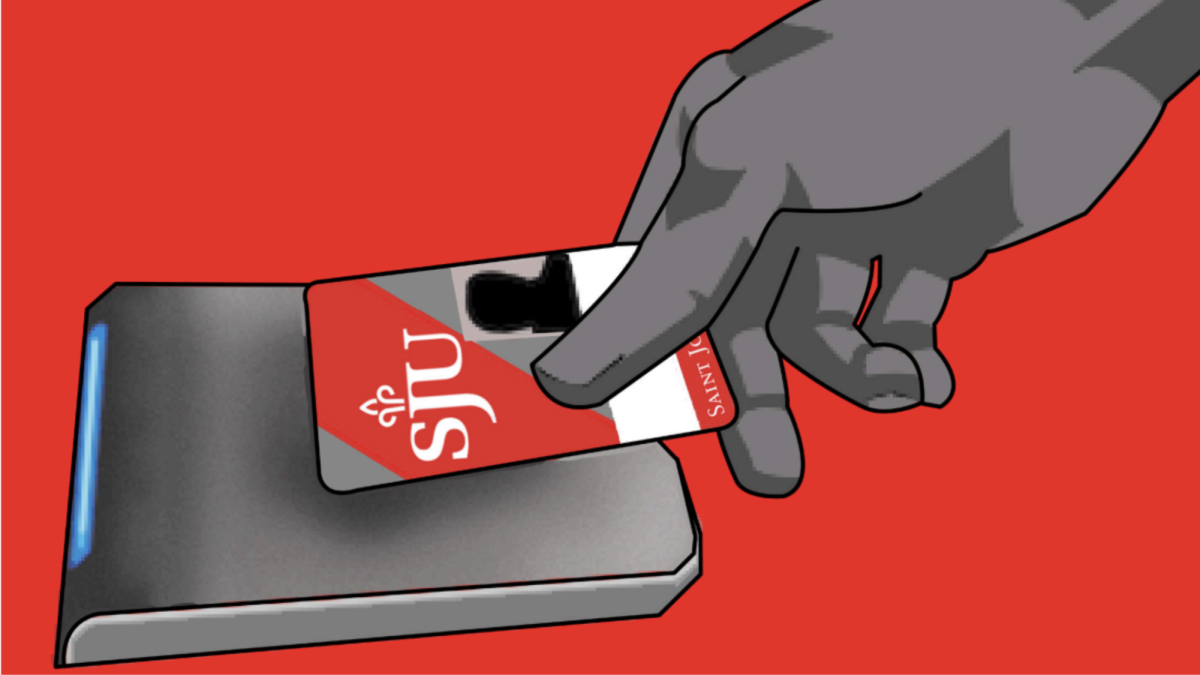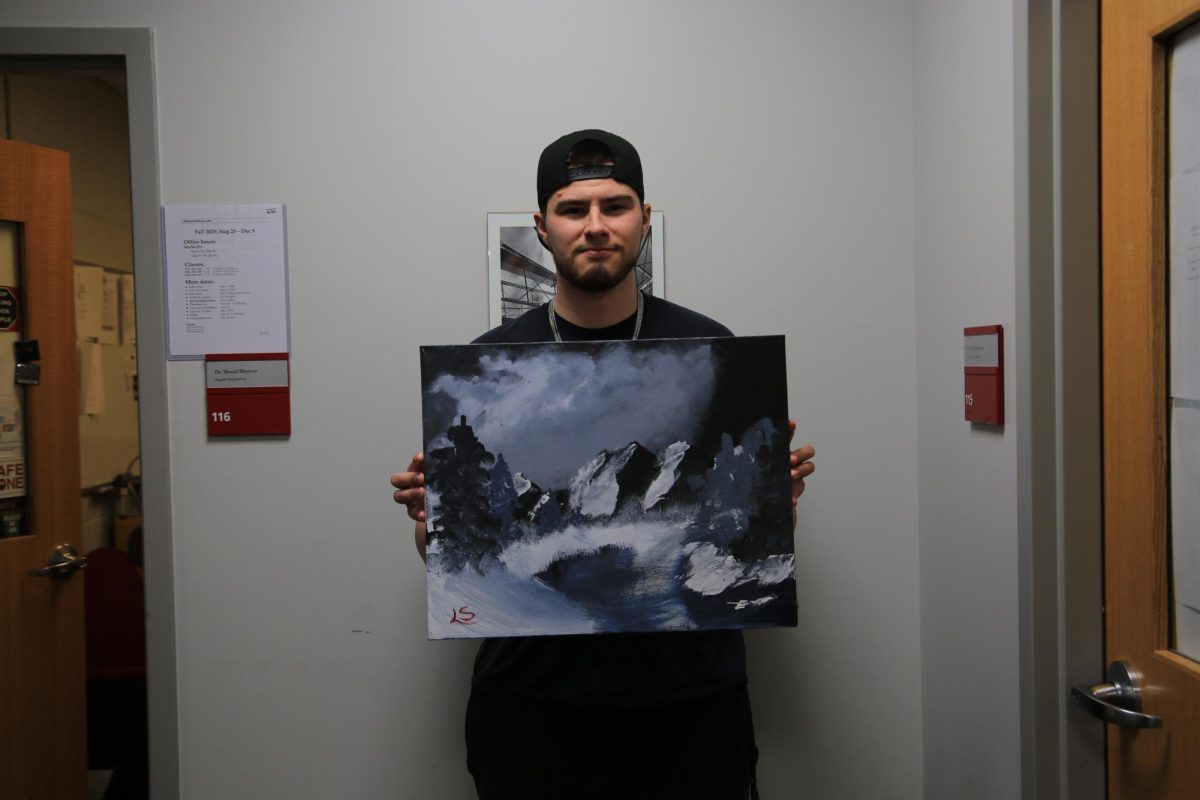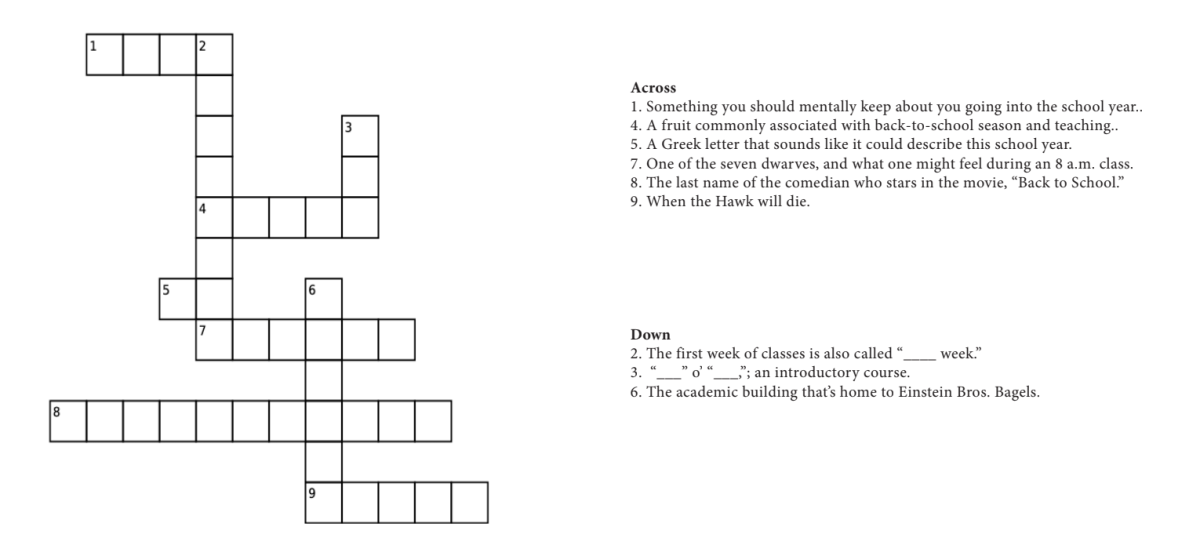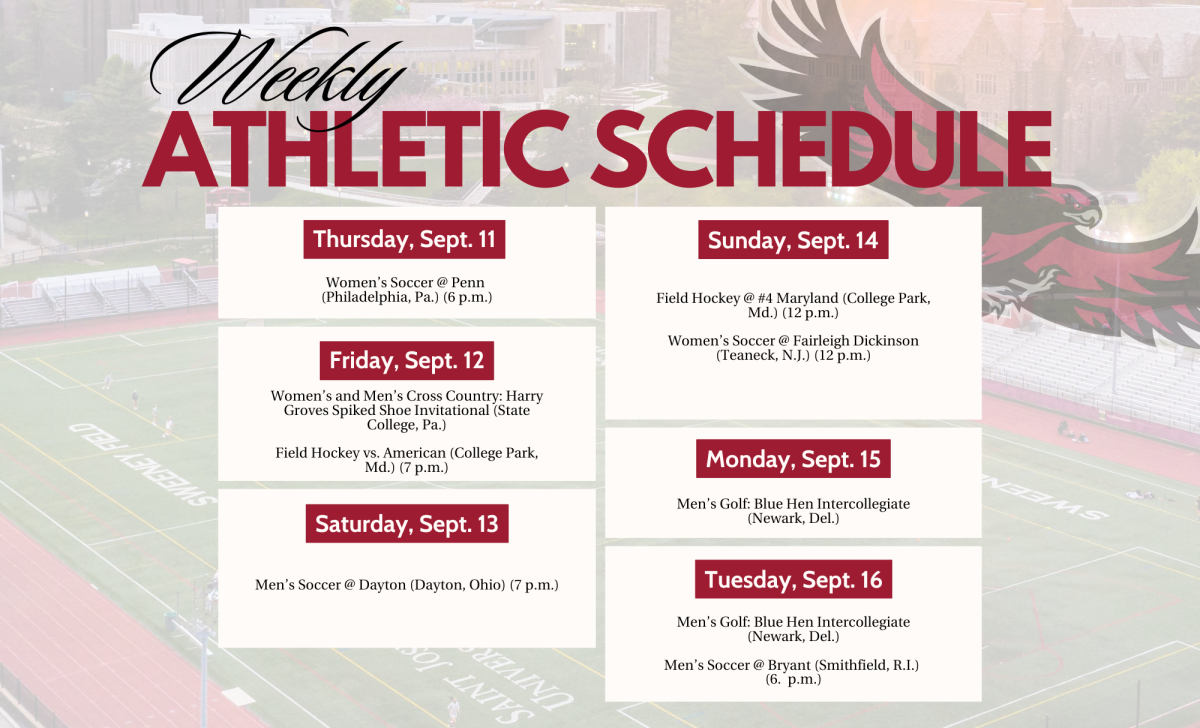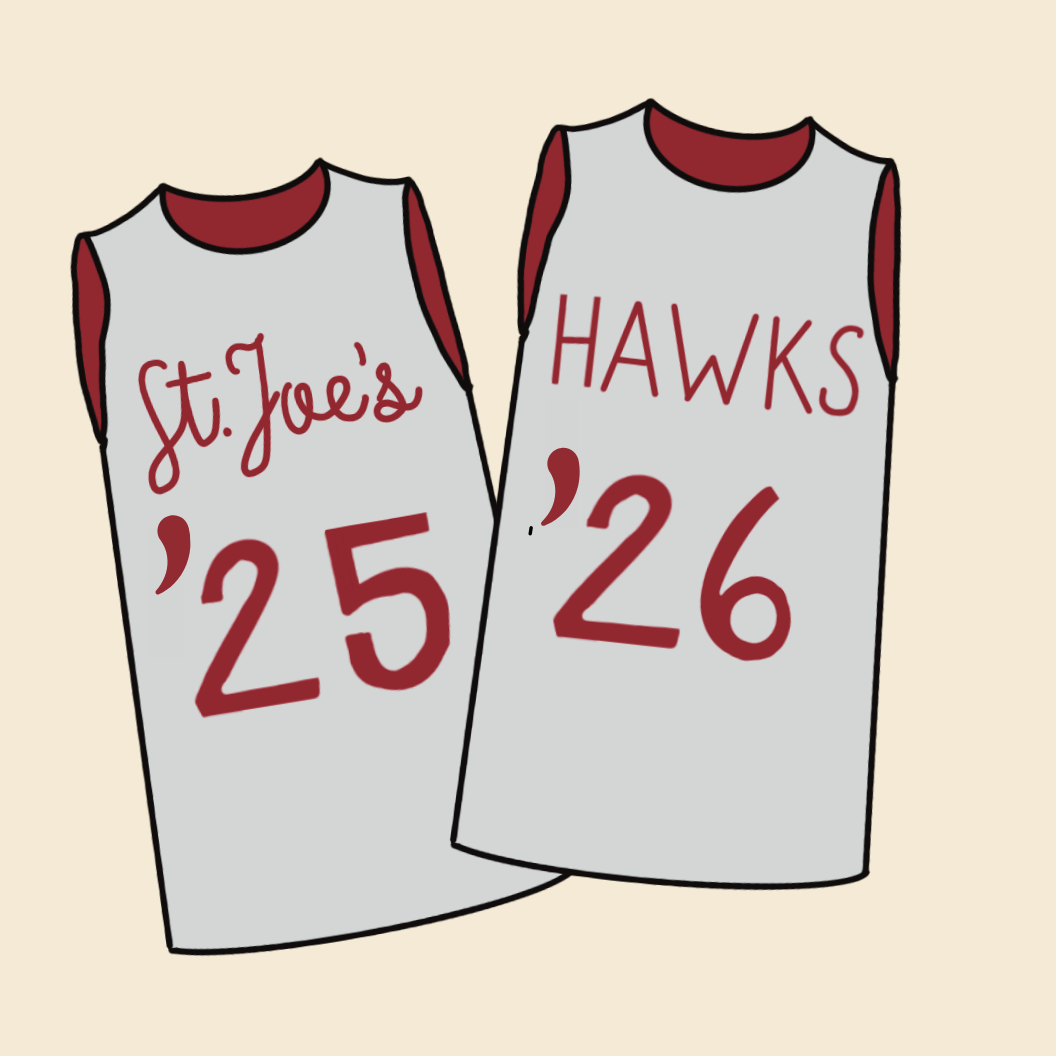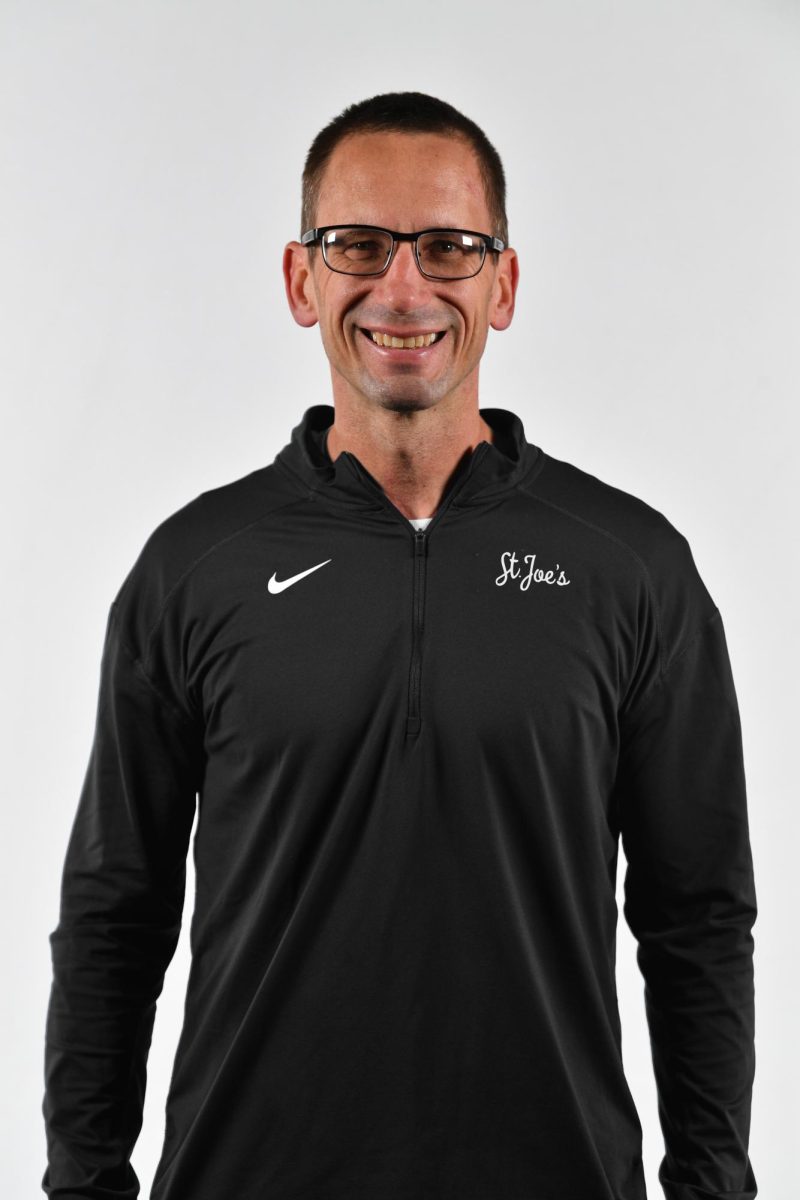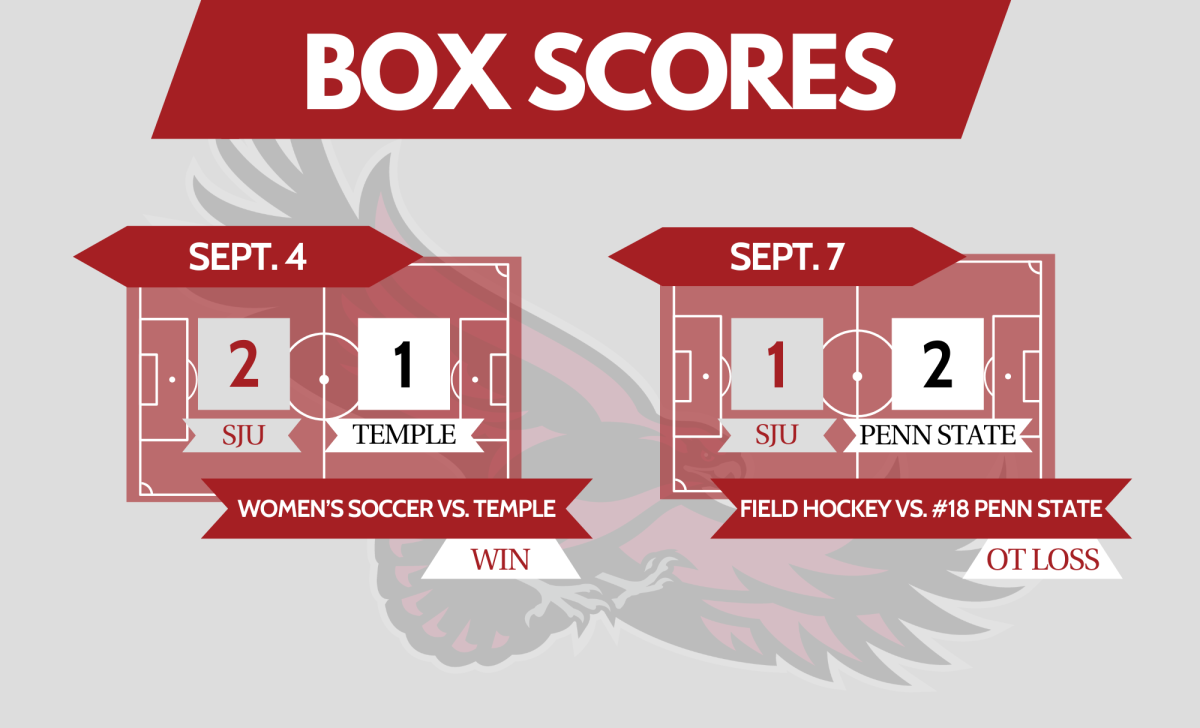Athletic recruiting at Saint Joseph’s University isn’t just about finding the best players; it’s about finding the players who best fit the atmosphere of the campus and the team as a whole, according to field hockey Head Coach Lynn Farquhar.
“You can pretty much choose your family,” Farquhar said. “The biggest thing is really our program mirrors the Saint Joseph’s campus, so it’s a fit. At the end of the day, people [who] want to come here are buying into what we’re trying to do and want to make our program better, but also share the magis and the ability to give back. It’s something greater than them.”
Sophomore Joely Helder, a member of the field hockey team, knew she didn’t want to attend college more than three hours from her hometown of Hummelstown, Pa. She started looking at potential colleges towards the end of her sophomore year of high school, although the formal recruiting process couldn’t begin until later, per NCAA rules.
“I started doing visits late junior into senior year,” Helder said. “I visited like five or six schools. You have overnights and you met with the team and talked with the coaches. After all that, I weighed my options and did my top three and here I am.”
Of course, the athletes at St. Joe’s aren’t just from nearby areas, but across the country, and even across the world. The field hockey team has the most international players of all the Division I teams at St. Joe’s, with five. Men’s tennis is close behind with four international athletes.
Men’s tennis Head Coach Ian Crookenden is originally from New Zealand, and graduated from the University of California Los Angeles in 1967. Crookenden decided to attend college in America because he could continue his education while still playing tennis, an opportunity not available elsewhere.
“The University systems [in other countries] are such that you go to University and they might have clubs, but they don’t have the organized competition that the NCAA offers through the American system,” Crookenden said. “Even though there’s a strong appeal in the University, it’s just not promoted and sponsored to the extent it is in this country.”
Freshman Victoria Kammerinke echoed Crookenden’s reasoning. Kammerinke is a goalkeeper on the field hockey team and from Kaarst, Germany. She decided about two years ago that she wanted to attend college abroad in order to get an education and continue to play field hockey at a competitive level.
The entire process, from recruitment, to taking tests, to applying, was much more complex than the domestic recruiting process. When Kammerinke decided she wanted to attend college abroad, she applied to a company that would help get her in contact with coaches in America. She also had to make and upload a video that coaches could watch to assess her skills.
“So the process from getting my very first video and talking to coaches to committing here, it was a very, very long process,” Kammerinke said. “It [the video] was kind of funny because first of all, you have to do an introduction of yourself all in English and my English was not very good… My brother helped me film—come to practice, film everything, and put up the footage together of all the games I had. It took us over two weeks to get [done]. It was a 10-minute video. You just want to show off and show what you can do. Just get everyone onto your side.”
That was just the beginning of the process for Kammerinke. She also had to take the SAT and the Test of English as a Foreign Language, or TOEFL, in order to apply to American colleges. After she had taken the tests and was satisfied with her scores, she began the process of applying to schools and deciding where to go.
Kammerinke had never been to the United States prior to applying for college. Farquhar found out about Kammerinke and decided she wanted her on the team. Although it’s not common, Farquhar decided to visit Kammerinke and her family in Germany during winter break.
“I actually built it in off my vacation,” Farquhar said. “I went to meet her and her family. The most important thing for me is that it’s the right fit. So when you get to speak with the student athlete and also meet their family, you understand a little bit more about them.”
In March 2016, Kammerinke and her mom came over to St. Joe’s, the only school she visited, for an official visit. She said she immediately wanted to stay.
In order to study in America, international students need a student visa. For Kammerinke, she could only apply for her visa two months in advance, which, in combination with stories she heard from friends who went to college in America, proved to be a stressful process.
“You’ve already booked your flight, but you don’t have your visa,” Kammerinke said. “I really got stressed out, but in the end it all worked out.”
A majority of Kammerinke’s recruitment process happened online, but Crookenden’s experience was much different given the technology at the time. Crookenden had never been to the United States before, and committed to UCLA without visiting the campus. He relied on film of his matches and advice from a friend who had studied in the United States.
“On the advice of a friend of mine who had studied in the United States, I decided that California was the right place for me,” Crookenden said. “UCLA was a state school as opposed to a private school; the New Zealand Board of Education had better recognition of the state-controlled [schools]. So, sight unseen, I agreed to go to UCLA and I started in the fall.”
As a coach, Crookenden doesn’t specifically look for international players, but rather for the best fit for the team as a whole. He receives emails from companies looking to help international athletes come to the United States, as well as emails from athletes and coaches themselves because of his reputation and international connections.
Crookenden highly encourages the international recruits to come to the United States and visit campuses before committing anywhere. When Crookenden was first recruiting sophomore Dan Tan, he told Tan and his father that the two needed to come to America to understand what he would be committing to.
Although the adjustment can be tough for international students, coaches and teammates notice and appreciate the impact the different cultures have on their teams.
“I think they can bring their energy and they’re all really cool people,” Helder said. “One of my best friends is international. It’s really cool having them. Their style of play brings out the best in us too I think and they can move off of each other and off of us, I think.”
Farquhar agreed, and believes that the culture they create is an important aspect of the team as a whole.
“They think differently about the game,” Farquhar said. “And then the strengths from our domestic players as well. When you merge them, it’s a really special combination that they can only help create… I think that’s the most fun and the best hockey to play.”


